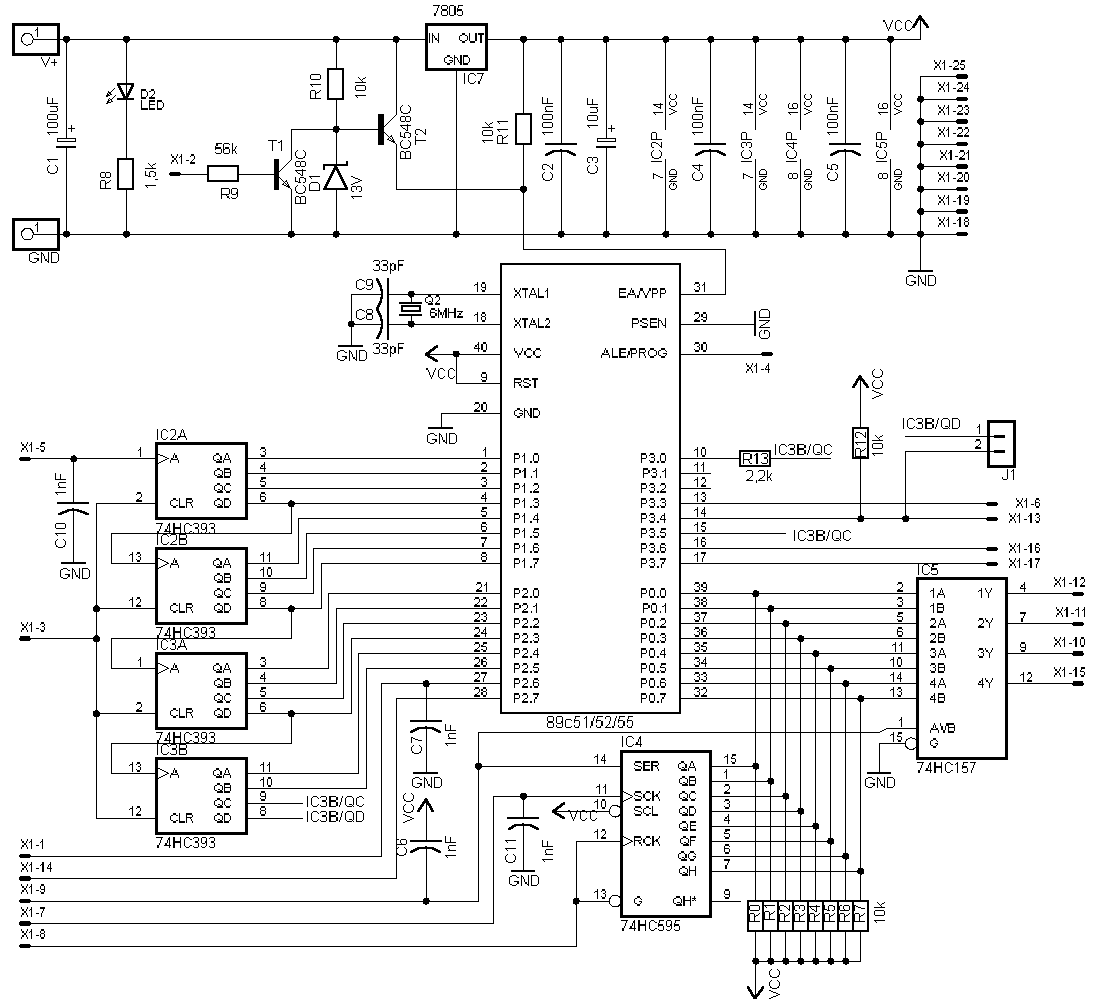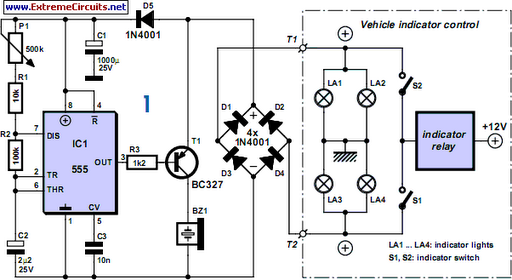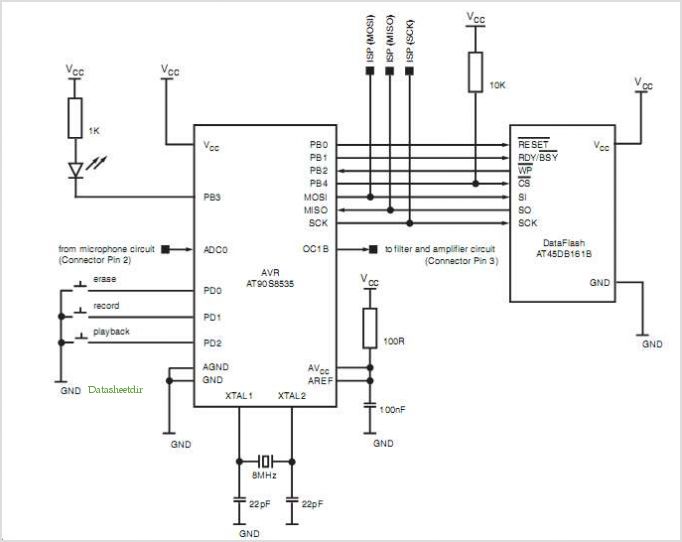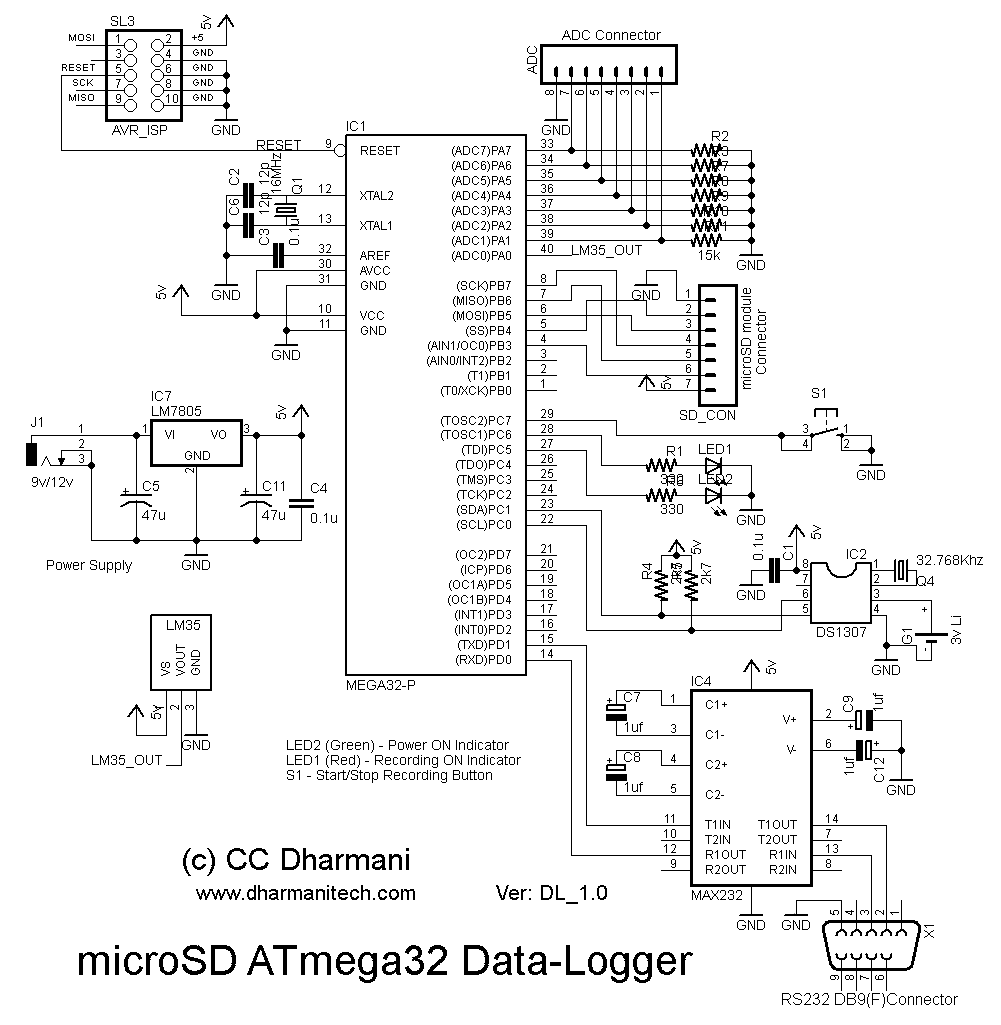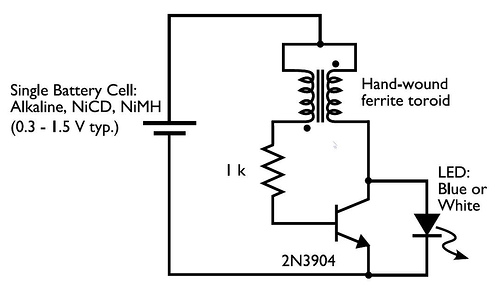
ATMEL 89C Series Flash Programmer
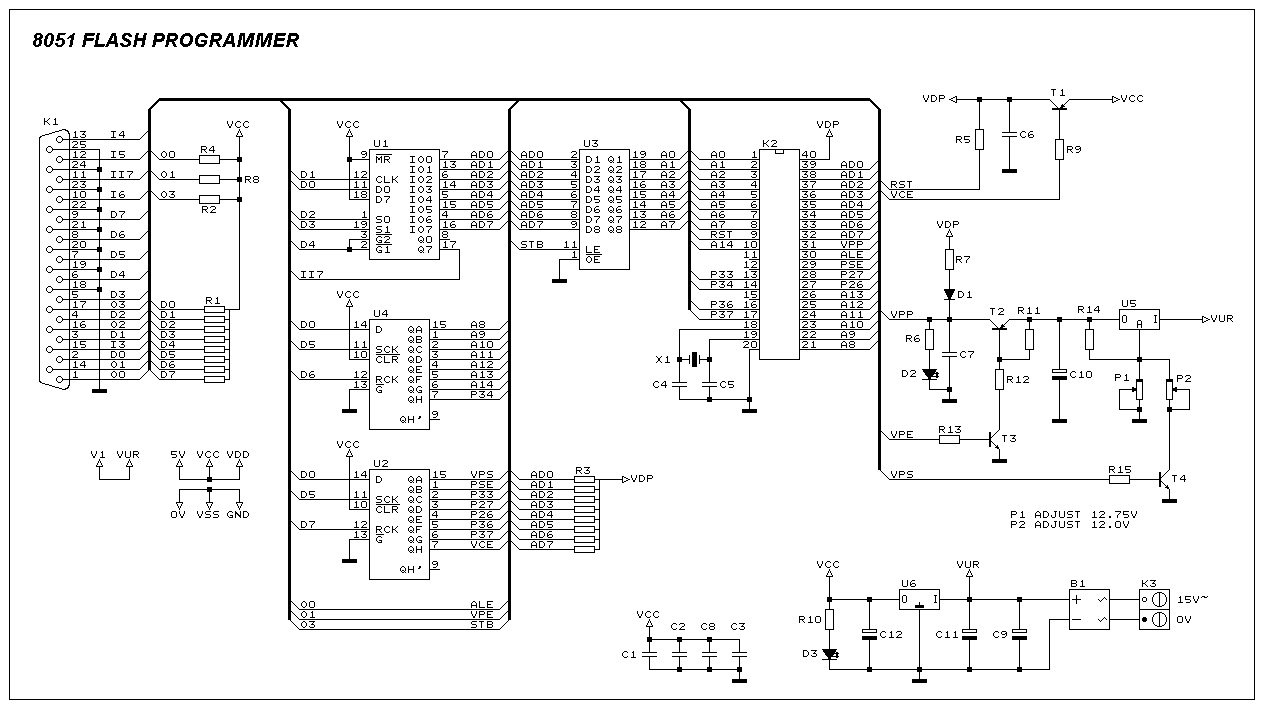
This programmer was designed in view of to be flexible, economical and easy to built, the programmer hardware utilizes the standard TTL series parts and no special components are used. The programmer is interfaced with the PC parallel port and there is no special requirement for the PC parallel port, so the older computers can also be used with this programmer. More: Figure 1 shows the circuit diagram of the Flash Programmer, the programmer is interfaced with the standard parallel port of the PC. As shown in the diagram U1 is used to control the data flow between controller and the pc, U3 latched the low order address.
The Flash Programmer circuit is designed to provide a straightforward and cost-effective solution for programming flash memory devices using a PC's parallel port. The use of standard TTL (Transistor-Transistor Logic) components ensures compatibility and ease of construction, making it accessible for hobbyists and engineers alike.
The circuit primarily consists of a few key integrated circuits and passive components that facilitate communication between the PC and the target flash memory. The central component, U1, functions as a data flow controller, managing the signals sent from the parallel port to the memory device. This IC is crucial for ensuring that the data is correctly interpreted and transmitted, allowing for reliable programming operations.
U3 serves a vital role in the circuit by latching the low-order address lines. This function is essential for addressing the specific memory locations within the flash device during the programming process. Proper latching of the address lines ensures that the programmer can access and write to the correct locations in the memory, which is critical for successful programming.
The design's flexibility allows it to interface with a wide range of flash memory types, making it a versatile tool for various applications. The straightforward nature of the circuit means that it can be assembled using commonly available components, thus minimizing costs and enhancing accessibility for users with different levels of expertise.
Overall, the Flash Programmer circuit is an efficient and economical solution for programming flash memory, leveraging the simplicity of TTL technology and the ubiquitous nature of the PC parallel port.This programmer was designed in view of to be flexible, economical and easy to built, the programmer hardware utilizes the standard TTL series parts and no special components are used. The programmer is interfaced with the PC parallel port and there is no special requirement for the PC parallel port, so the older computers can also be used with this programmer.
Figure 1 shows the circuit diagram of the Flash Programmer, the programmer is interfaced with the standard parallel port of the PC. As shown in the diagram U1 is used to control the data flow between controller and the pc, U3 latched the low order address
🔗 External reference
The Flash Programmer circuit is designed to provide a straightforward and cost-effective solution for programming flash memory devices using a PC's parallel port. The use of standard TTL (Transistor-Transistor Logic) components ensures compatibility and ease of construction, making it accessible for hobbyists and engineers alike.
The circuit primarily consists of a few key integrated circuits and passive components that facilitate communication between the PC and the target flash memory. The central component, U1, functions as a data flow controller, managing the signals sent from the parallel port to the memory device. This IC is crucial for ensuring that the data is correctly interpreted and transmitted, allowing for reliable programming operations.
U3 serves a vital role in the circuit by latching the low-order address lines. This function is essential for addressing the specific memory locations within the flash device during the programming process. Proper latching of the address lines ensures that the programmer can access and write to the correct locations in the memory, which is critical for successful programming.
The design's flexibility allows it to interface with a wide range of flash memory types, making it a versatile tool for various applications. The straightforward nature of the circuit means that it can be assembled using commonly available components, thus minimizing costs and enhancing accessibility for users with different levels of expertise.
Overall, the Flash Programmer circuit is an efficient and economical solution for programming flash memory, leveraging the simplicity of TTL technology and the ubiquitous nature of the PC parallel port.This programmer was designed in view of to be flexible, economical and easy to built, the programmer hardware utilizes the standard TTL series parts and no special components are used. The programmer is interfaced with the PC parallel port and there is no special requirement for the PC parallel port, so the older computers can also be used with this programmer.
Figure 1 shows the circuit diagram of the Flash Programmer, the programmer is interfaced with the standard parallel port of the PC. As shown in the diagram U1 is used to control the data flow between controller and the pc, U3 latched the low order address
🔗 External reference

